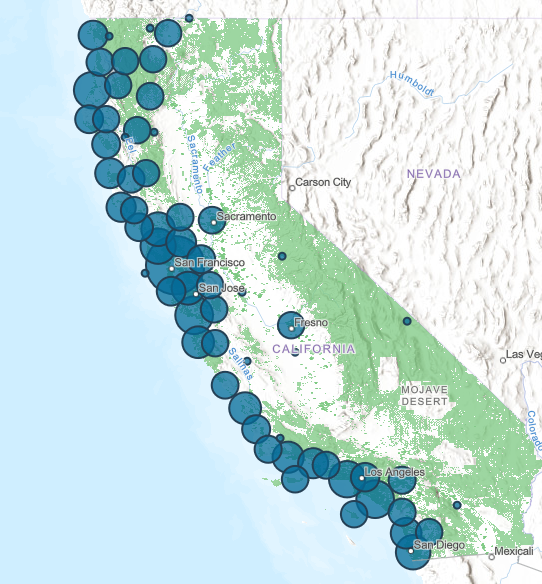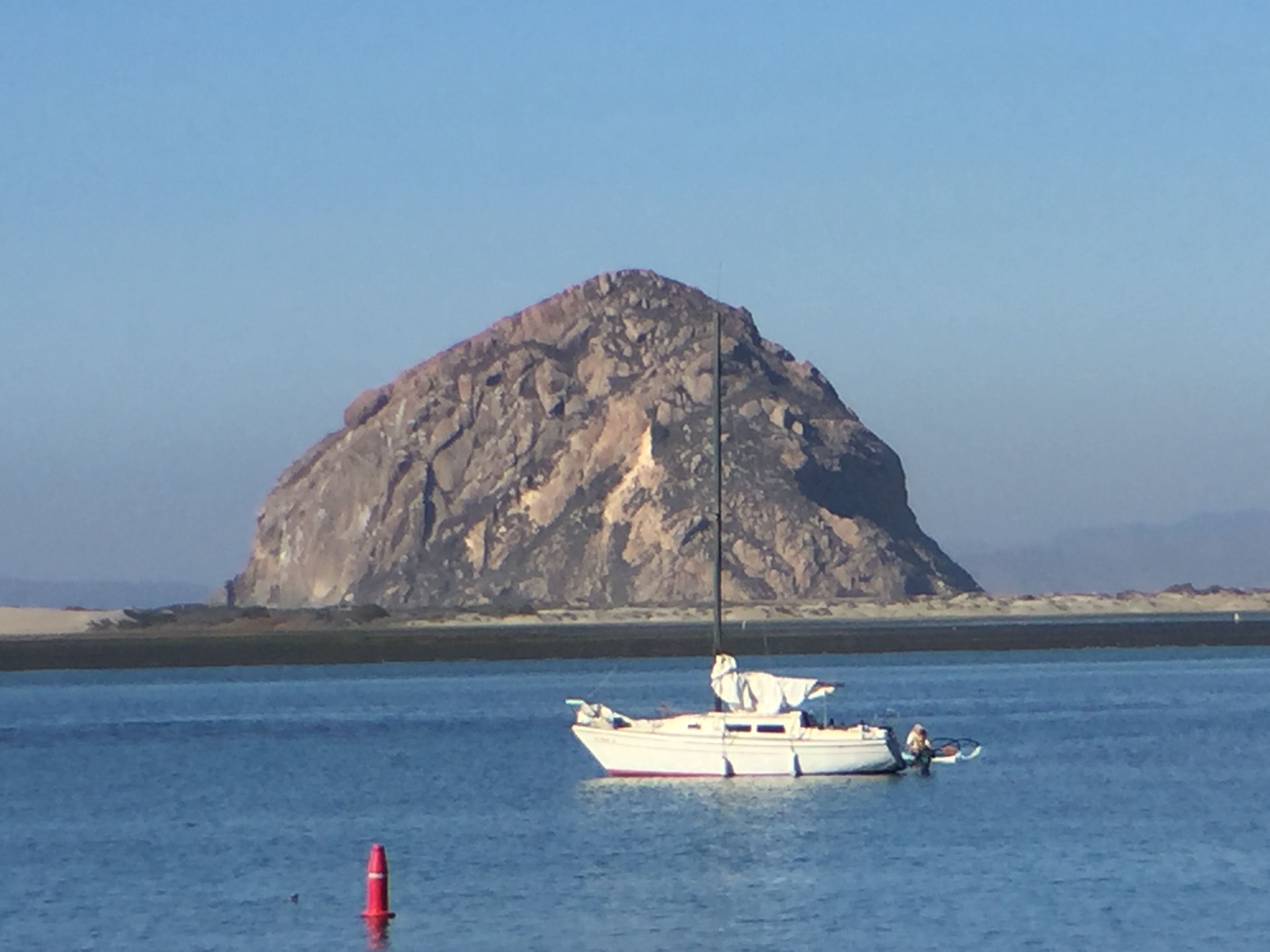Coastal Conservancy Awards Nearly $4 million of state cap-and-trade proceeds going to protect communities from climate change
Coastal Conservancy Awards of $18.5 million in Grants for Coastal Protection and Restoration
Morro Bay – This week, the Board of the California State Coastal Conservancy awarded $3.8 million for 12 projects in the Conservancy’s Climate Ready grant program, which supports projects to increase the resilience of coastal resources and communities to the impacts of climate change. These grants were part of a total of nearly $18.5 million in 19 grants for the protection and restoration of California’s coastal resources.
For the first time, this year’s Climate Ready grants were funded by state cap-and-trade proceeds, which are deposited in the state greenhouse gas reduction fund (GGRF) and administered by the California Air Resources Board. In order to meet GGRF’s legislative purposes, projects must facilitate reductions of greenhouse gas emissions and, where feasible, include additional co-benefits, such as investment in disadvantaged communities and economic, environmental and public health benefits to the state. 86% of the $3.8 million awarded is going to projects that are located in and benefit disadvantaged communities.
Also approved was $5.7 million for U.S. Army Corps of Engineers to place dredged sediment from Redwood City Harbor at wetland restoration sites on the shoreline of San Francisco Bay. The Corps dredges approximately 1.5 million to 2 million cubic yards of sediment each year in San Francisco Bay, maintaining federal navigation channels for shipping. The sediment dredged by the Corps must be placed at permitted placement sites, such as the Deep Ocean Disposal Site or In-Bay disposal sites, or at beneficial use sites. Many of the restorable diked baylands have subsided and need sediment to raise their elevations or to create transition zones prior to tidal restoration. This funding will enable sediment from Redwood City Harbor to be placed at restoration sites in Bay as the Corps requires a nonfederal sponsor to pay the incremental cost above the cost for In-Bay disposal to place the sediment at a beneficial use site.
“Both the GGRF-funded Climate Ready grants and the Beneficial Re-use of Sediment project are great examples of innovation in conservation.” said Sam Schuchat, Executive Officer of the Coastal Conservancy. “We are finding new funding streams and new technologies to accelerate our protection of coastal resources. In the race against climate change and sea level rise, we are using every tool we have to safeguard our irreplaceable natural resources.”
Additionally, the Conservancy authorized $118,000 to Sonoma State University and the Friends of the Sea Otter to implement two separate projects to aid in recovery of the southern sea otter. Sonoma State University will undertake an analysis of the potential number of sea otters that Drakes Estero and Tomales Bay could support, and Friends of the Sea Otter will continue its public education programs focused on reducing stress on otters induced by interactions with humans. These grants are funded through a voluntary tax check-off program.
The full lists of projects considered and funded at the December Board meeting can be found here:
https://scc.ca.gov/2018/11/21/coastal-conservancy-public-meeting-in-morro-bay-december-06/
Notes to Editors:
The Coastal Conservancy is a state agency, established in 1976, to protect and improve natural lands and waterways, to help people get to and enjoy the outdoors, and to sustain local economies along California’s coast. The Conservancy is a non-regulatory agency that supports projects to protect coastal resources and increase opportunities for the public to enjoy the coast.
Since its founding, the Conservancy has:
- Funded 2,400 projects along the California coastline and in the San Francisco Bay.
- Protected 390,000 acres of coastal lands through acquisition of fee title and conservation easements.
- Restored 33,000 acres of habitat.
- Built 200 new coastal accessway and 210 miles of new trails.
- Put $1.3 billion to work for conservation projects, and leveraged far more from federal, local government, and private sources.
The GGRF-funded Climate Ready grants are part of California Climate Investments, a statewide program that puts billions of Cap-and-Trade dollars to work reducing GHG emissions, strengthening the economy, and improving public health and the environment– particularly in disadvantaged communities. The Cap-and-Trade program also creates a financial incentive for industries to invest in clean technologies and develop innovative ways to reduce pollution. California Climate Investments projects include affordable housing, renewable energy, public transportation, zero-emission vehicles, environmental restoration, more sustainable agriculture, recycling, and much more. At least 35 percent of these investments are located within and benefiting residents of disadvantaged communities, low-income communities, and low-income households across California. For more information, visit the California Climate Investments website at: www.caclimateinvestments.ca.gov
Latest News
- Sea Otter Recovery Grants RFP Now Open!The California State Coastal Conservancy announces the availability of grants to public agencies, tribes and nonprofit organizations for projects that facilitate the recovery of the southern sea otter along California’s coasts. The California Sea Otter Fund is one of the state’s tax check-off funds that allows taxpayers to voluntarily contribute to the recovery of California’s […] (Read more on Sea Otter Recovery...)
- Coastal Conservancy Public Meeting in Oakland – April 18Meeting Notice Douglas Bosco (Public Member), Chair Marce Gutiérrez-Graudiņš (Public Member), Vice Chair Joy Sterling (Public Member) Jeremiah Hallisey (Public Member) Wade Crowfoot, Secretary for Natural Resources; Bryan Cash and Jenn Eckerle (Designated) Caryl Hart, Coastal Commission Chair; Madeline Cavalieri (Designated) Joe Stephenshaw, Director, Department of Finance; Michele Perrault (Designated) Senate Representatives Benjamin Allen (District […] (Read more on Coastal Conservancy Public...)
- Request for Partnership Proposals/Letters of Interest for the US Fish and Wildlife Service’s National Coastal Wetlands Conservation Grant Program FY 2025NOTE: This is a call-for preproposals for projects who would like to partner with the California State Coastal Conservancy to apply for US Fish and Wildlife Service’s National Coastal Wetlands Conservation Grant (NCWCG) Program funding. This is NOT the official NCWCG call for applications. Projects hoping to receive NCWCG funding are NOT required to apply […] (Read more on Request for Partnership...)

 Help Save Sea Otters at Tax Time
Help Save Sea Otters at Tax Time


